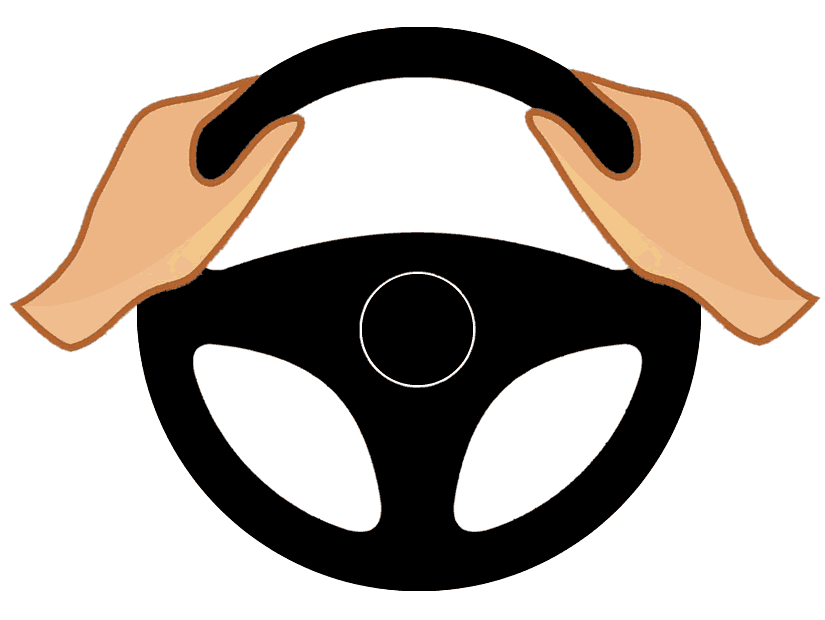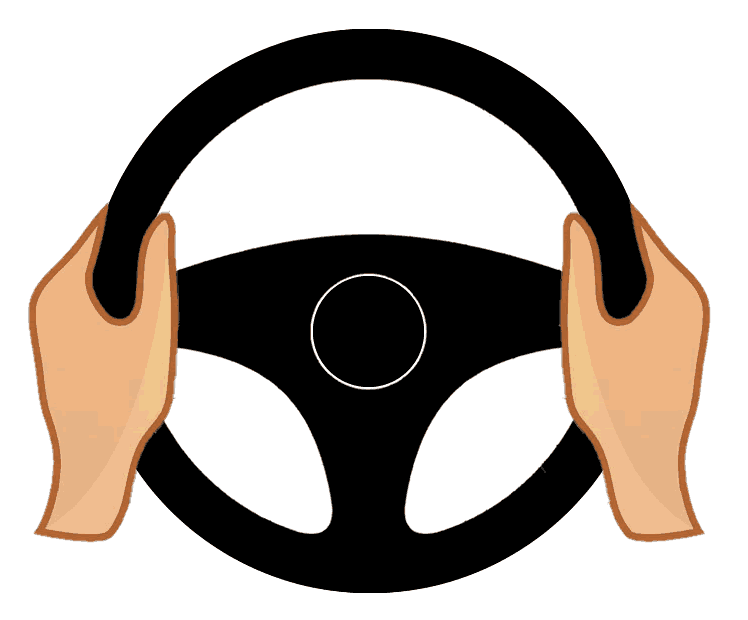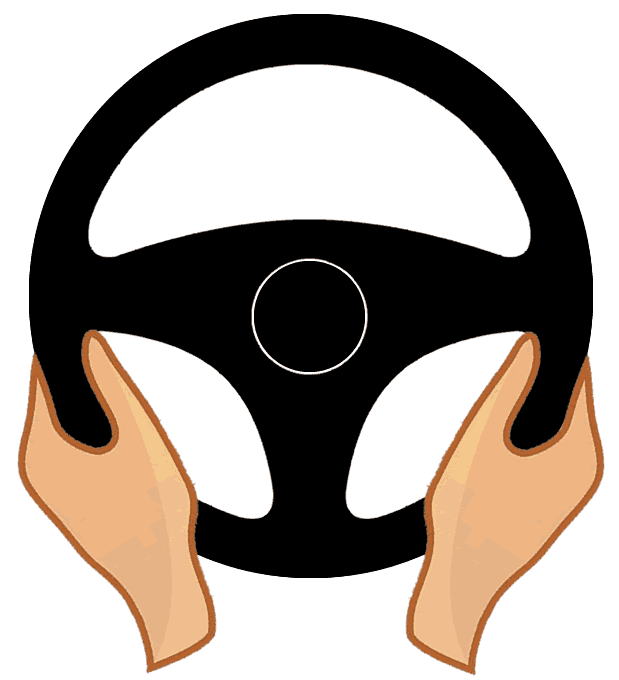There was a time where during the practical driving test, examiners were rather strict when it came to steering wheel hand positions. The modern driving test now sees examiners far more relaxed with the various hand positions of test candidates.
During the driving test, providing that you demonstrate a high standard of steering control, you can (within reason) hold the steering wheel where ever you like.
As a new learner driver, you’ll still need an understanding of where best to position your hands on the steering wheel in order to maintain the highest level of control.
You may find that when you begin learning to drive, you’ll have tense shoulders and arms and you’ll be gripping the steering wheel too tightly. For best control of the car, it’s important that you choose a steering wheel hand position that helps you adopt a light grip, while maintaining relaxed arms and shoulders. The most comfortable hand position is determined by the type of car you’re driving and by your size.
To make understanding steering wheel hand positions easy to understand and remember, we refer to the steering wheel as a clock and the hand placement as the hands on a clock. There are three generally accepted steering wheel hand positions:
10 and 2 Steering wheel Hand Position

The 10 and 2 steering wheel hand position is the traditional method taught by instructors for many years and is still taught by many today. The reason the 10 and 2 position was so popular is that it’s easier to start turning the wheel by pulling down, rather than pushing up. But with all modern cars now having power assisted steering as standard, this hand position is no longer quite as relevant.
Additionally, the 10 and 2 hand position isn’t comfortable for all drivers. Not all cars have height adjustable seats or steering, so if you’re quite short, stretching your arms up to this hand position can make your arms ache after a time.
9 and 3 Steering wheel Hand Position

Learner drivers are increasingly finding the 9 and 3 steering wheel hand position more comfortable. With the arms not having to be raised so high, the 9 and 3 position results in less arm ache and is ideally suited to those with a shorter reach.
8 and 4 Steering wheel Hand Position

Because we’ve been taught to hold the steering wheel towards the top for so many years, the 8 and 4 steering wheel hand position looks rather odd. Some consider the 8 and 4 hand position as the safest option as they claim it minimises forearm damage, or your arm hitting your face should the steering wheel mounted airbag be deployed.
Drivers with a long arm reach may find the 8 and 4 position a little restrictive, but ultimately it’s about comfort and whichever hand position provides you with the best control of the vehicle.
Push and Pull Steering Method
Once you’ve found the most comfortable steering hand position to suit you, you’ll then need to move onto steering. For that, we call it the push and pull steering method.
Combination of Hand Positions
Driving instructors initially teach steering wheel hand positions as a reference point so that learner drivers know how to operate the wheel in a safe and comfortable method. Once you have found your most comfortable hand position from one of the choices above, you’re then free to adapt and alter hand positions as you wish.
What’s the Examiner Looking For?
During the practical driving test, the examiner is simply looking for a good level of steering control. Ensure you hold the steering wheel in a manner that is comfortable and offers good control of the car. To find out exactly how the examiner judges your steering and hand placement on the driving test, see steering wheel myths and facts for the driving test.